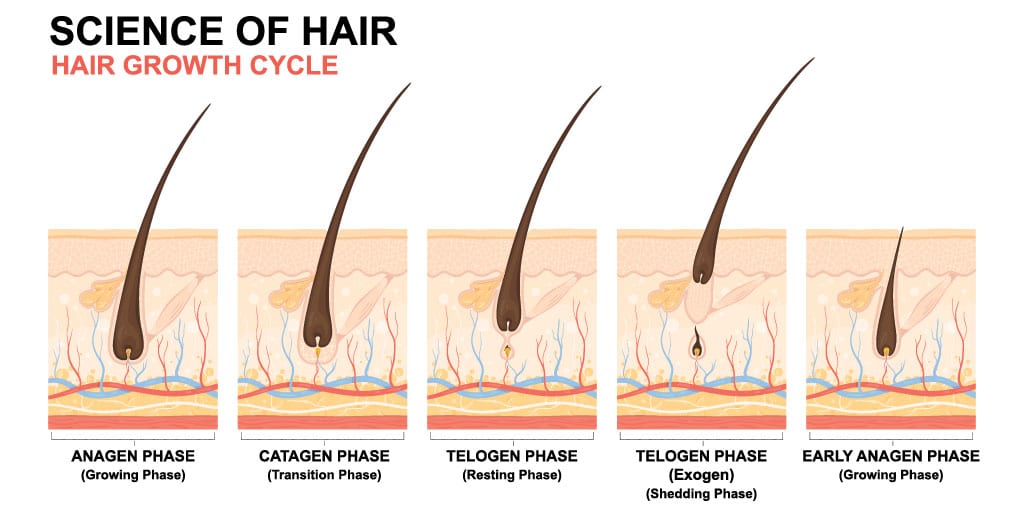Anatyomy of Hair and the Hair Growth Cycle
| Call today and schedule your consultation: (402) 464-4111 |
Anatomy of Hair
Accoording to intechopen.com
Hair is one of the characteristic features of mammals and has various functions such as protection against external factors; producing sebum, apocrine sweat and pheromones; impact on social and sexual interactions; thermoregulation and being a resource for stem cells. Hair is a derivative of the epidermis and consists of two distinct parts: the follicle and the hair shaft. The follicle is the essential unit for the generation of hair.
The hair shaft consists of a cortex and cuticle cells, and a medulla for some types of hairs. The hair follicle has continuous growth and a rest sequence named hair cycle. The duration of growth and rest cycles is coordinated by many endocrines, vascular and neural stimuli and depends not only on the localization of the hair but also on various factors, like age and nutritional habits. Distinctive anatomy and physiology of hair follicles are presented in this chapter. Extensive knowledge of anatomical and physiological aspects of hair can contribute to understand and heal different hair disorders.
The Hair Growth Cycle
Accoording to thinninghair.com
Until fairly recently, hair growth was thought to occur in three phases—anagen, catagen, and telogen. Researchers have recently separated out a fourth phase called exogen, and at any one time, most of us have hair in all four phases on our bodies and scalp. However, in terms of hair loss, the telogen and exogen phases are typically combined and spoken of as the telogen phase. Under non-hair loss conditions, typically 90-95% of all hairs are in the anagen (growth) phase at any given time. During this phase, which lasts from one to seven years for scalp hair, it can grow almost 5 inches per year in Caucasians and Asians.
The next phase, called the catagen phase, is a transitional one and lasts less than a month. At any given time less than 5% of all hairs are in the catagen phase, during which the hair follicle dramatically shrinks and the dermal papilla at its base breaks away from the existing hair. Interestingly, the hair doesn’t fall out or “shed” at this time.
The telogen, or resting, phase lasts about three months waiting for the new hair to develop. The approximately 5-10% of hair in this phase does not grow but is still attached to the follicle. With the proper molecular signaling at the cellular level, the old hair finally enters the exogen phase where it is shed, helped along by the simple mechanics of washing and grooming hair. Through other cell-signaling mechanisms, the hair follicle is prompted to enter the growth phase again. Typically people shed about 100 scalp hairs a day in this normal hair cycle.
Genetic studies on scalp biopsies utilizing sophisticated equipment and software programs have revealed that the seemingly simple hair growth cycle is incredibly complex coordination involving hundreds of genes and proteins. There are even factors that regulate when the genes produce the specific proteins needed for hair cells to perform the multiple growths, energy, and structural maintenance tasks just to survive—all of which are affected by a combination of hormones, age, and health.




